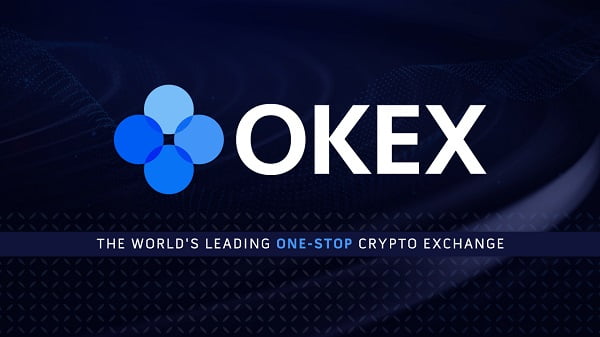
[ad_1]

Robert Quartly-Janeiro is the Chief Strategy Officer of the Singapore-based Tier-1 cryptocurrency exchange Bitrue.__________
As I was flicking through the weekend supplement of a well-known financial newspaper, the number of luxury watch advertisements I had to bypass got me thinking: with so many high-end watchmakers out there, what makes their production rare — and, therefore, valuable?
Brand heritage, design, the rarity of collections, celebrity ambassadors, and partnerships with Formula One and Wimbledon play their part.
Yet, the real value is the watchmaker’s skill, materials used, and demand from collectors, heirlooms, investors, bonus-fuelled buyers, and gift shoppers.
Ultimately, watches have been a unique store of value over time.
Today, cryptocurrencies share similar traits, albeit moving against more dynamic price movements, e.g., other altcoins, fiat currencies, and real asset-backed stablecoins.
The idea of rarity and value within crypto is informed by its tokenomics: a pressing matter for projects deciding whether ‘to burn or not to burn.’
More broadly, the supply and demand of cryptocurrencies are often forgotten at a macro level.
This issue needs to be addressed, as cryptocurrencies are losing a sense of rarity: with positive and negative implications we will explore below.
Rarity value, impaired
The economics of the crypto market is relatively simple; there are 420m crypto investors globally, 250 recognized centralized exchanges (CEXs) trading in cryptocurrencies, and 22,932 different coins in circulation.
The combined market cap is $1.24trn — roughly the GDP of Indonesia.
The ten largest currencies represent $1trn of market cap, while the remaining $240bn is spread across 22,922 coins: demonstrating significant concentration and utility at the top.
Advocates discussing the industry’s future often miss the issue of a large tokenomic disconnect.
Even in the Web3 world, where crypto is used as a means of payment, bought, sold, and lent, the increasing use by businesses and countries in digital and real economies cannot hide the fact that thousands of altcoins will not gain critical mass.
Even if the adoption grows three-fold by the end of the decade, these coins have limited-to-no utility (and, respectively, worth). The fact that there are so many coins in circulation damages rarity value and bewilders investors.
Don’t take me wrong, this doesn’t mean new cryptocurrencies shouldn’t come to market: far from it, they should be welcomed (even if with an impatient eye on utility and a deeper focus on the maximum supply that comes with each ICO).
In the meantime, investors must gauge the impact that total supply, circulating supply (who holds what), and maximum supply have on price discovery and volatility.
As with supercars, classic cars, art, and stamps, the rarer the item, the higher the inherent value beyond its original price.
Crypto is operating way beyond these markers.
For individual projects, there is a huge variance in the envisaged maximum number of coins to be mined.
Take Solana which has a maximum supply of 511m whilst Bitcoin’s famously small 21m adds to its value and rarity.
Elsewhere, XRP’s is 100bn, and Ethereum’s is theoretically unlimited although the circulating supply of 120m limits the prospect of an exponential increase.
USDT is curiously low in many respects at 82.3bn given its use as a base for trades, yet its cash equivalent holdings of 9.6% could affect its value.
Importantly, the economics of each project is a combination of several factors.
Namely, where the founders arrived at a particular number, like XRP did, and the anticipated utility in a digital economy, in which case Cardano (ADA; 45b max supply) and XRP should see greater adoption, but the price mechanism would mean ETH, SOL, and BTC are more valuable in economic terms.
Lastly, there is a difference between the max supply and the ability to mine those coins accordingly.
Tools for a change
With the expansion of the money supply, national debts post-Bretton Woods, and the global financial crisis, trust in currencies has decreased.
Around the world, people are understandably concerned about debasement, banks playing with their money, supply-side inflation beyond their control, and quantitative tightening (QT)’s impact on interest rates; large swaths feel excluded from gains but exposed to all downside risks: a political risk as much as an economic one.
The question is, how do we restore the damage — and balance across crypto?
First, an industry-wide trade-off is needed to reduce excess supply and increase quality in a way that won’t be misread as an attempt at centralized control.
For CEXs, it would be easiest to delist projects that haven’t performed well and pay closer attention to the plans of those that remain.
For individual projects, consideration should be given to increased burns or merging with those looking to achieve similar results.
Without taking these steps, the argument that crypto represents a better alternative to debased fiat currencies won’t stand if the crypto’s maximum supply continues to grow as forecast.
Ultimately, this would seem unrealistic and remove the differentiation between the circulation of, say, Bitcoin and USD as the world’s reserve currency.
Need for damage control
Are cryptocurrencies losing a sense of rarity? Yes, from a value proposition perspective.
However, we have the tools to change this for the benefit of existing and future adopters.
I see two scenarios where this would make a change.
The first is where trust in an economy, sovereign indebtedness, or financial stability is questioned: crypto’s stall investment case as an alternative to fiat loses relevance in abundance.
The second, more futuristic scenario depends on how cryptocurrencies and Web3 integrate to enable that ecosystem — and the number of cryptocurrencies that will be required for it.
The jury is still out on the second question, but we can already say 10,000 currencies are way too many.
After all, and borrowing from the watch analogy, who would pay top Bitcoin for a watch everyone else is wearing? Nobody.
A bonfire or mega-merge feels needed.
____
Learn more:
– Ripple CEO Says There are Too Many Cryptos, but Bull is on the Horizon- The ‘Number Go Up’ Mentality Drives Crypto World As It Matures
– Everstake CEO: Many Delegators Fail to Understand What Staking Is – And It May Lead to Trouble- Lessons From the Meltdown: a Value Approach to Token Valuation
– How the Biggest Money Experiment in Human History Will Impact Global Payments- Merchant Crypto Payments: Clever Marketing or Signs of Real Adoption?
– Inflation Is Spiking in Zimbabwe (Again). Why High-Interest Rates Aren’t the Answer- Soaring Inflation Puts Central Banks on a Difficult Journey
– What is Cryptocurrency?- Different Categories of Cryptocurrencies
– What is an ICO?- What Is Web3?
[ad_2]
Source link



